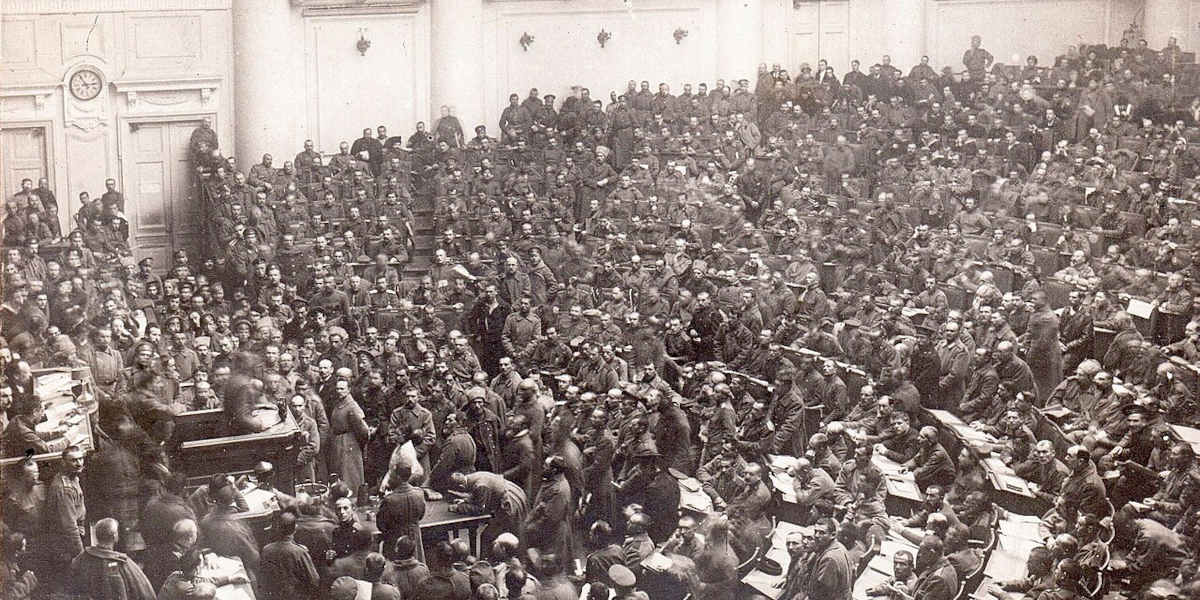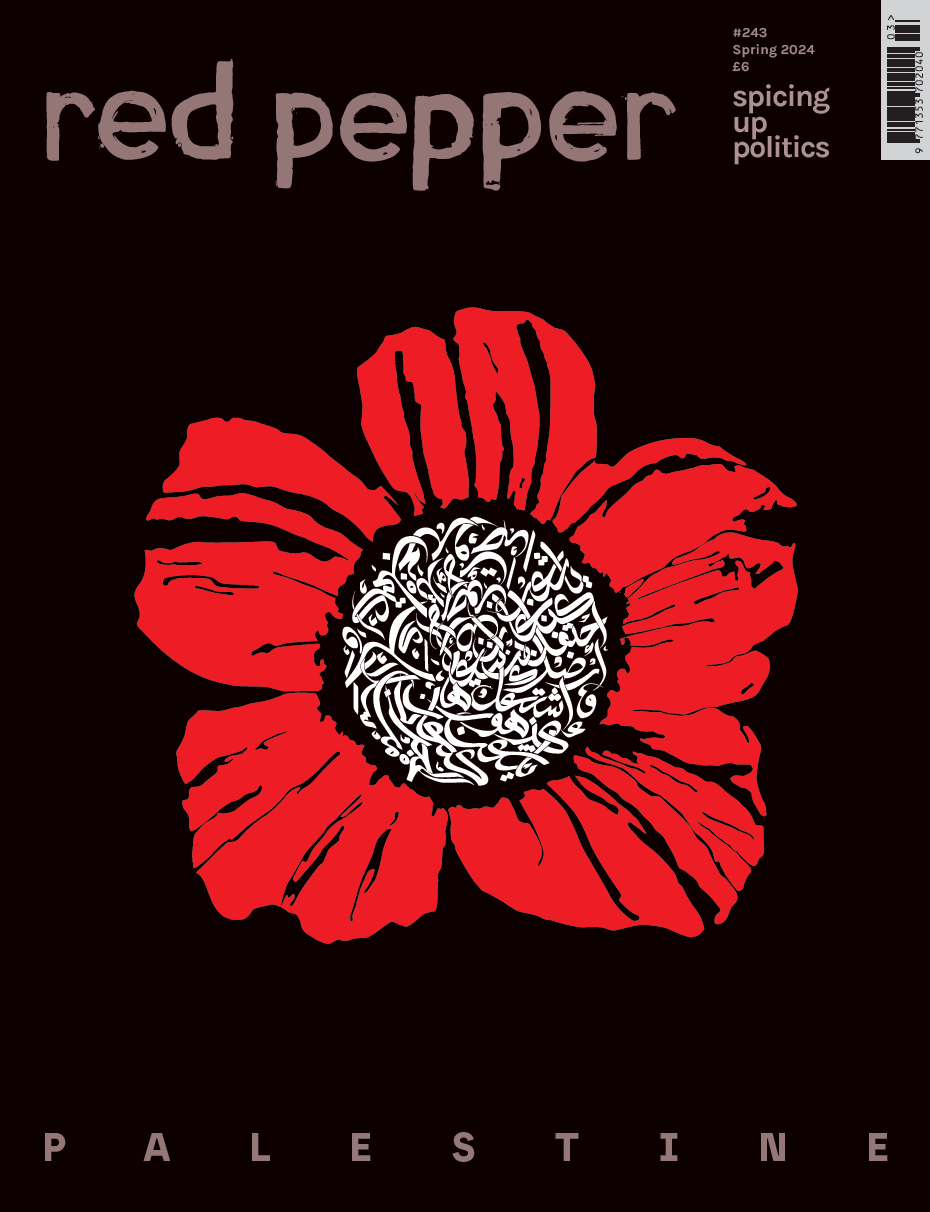The phrase ‘dual power’ came out of the Russian Revolution and was used by Leninists, particularly Trotskyists. It has since been taken up by many anarchists to mean a strategy for reaching post-capitalist anarchy.
During the first (February) phase of the 1917 Russian Revolution, the term ‘dvoevlastie’ was widely used. It translates as ‘dual power’ or ‘double sovereignty.’ This referred to a situation in which Russia had two co-existing governments. One was the ‘Provisional Government,’ composed of pro-capitalist liberals, ’moderate’ monarchists, and reformist social democrats. The other was the ‘soviet’ (council) system, rooted in workers’ councils, army regimental committees, and peasant assemblies. Often declarations had to be endorsed by both the Provisional Government and the Petrograd Soviet to be carried out.
Leon Trotsky argued that such dual rules, representing alternate class powers, were usually the case in revolutionary situations throughout history. Sooner or later they had to be resolved by the power of one class or another, through either completing a revolution or defeat by counterrevolution. In Russia, the Bolshevik-led soviets took sole power in the October Revolution. In a few years, the dual-power process would be run in reverse, as the collective party-state bureaucracy took sole power from the workers and peasants who had been organized in the soviets.
Today, ‘dual power’ is often used in reference to anarchist strategies and theories. From Pierre-Joseph Proudhon in the mid-19th century on, many anarchists have advocated a strategy of building alternate, non-capitalist, organizations to undermine capitalism and the state. Gradually, and mostly peacefully, such institutions would replace the existing system. Proudhon advocated a cooperative bank affiliated with peasant farms and worker-run enterprises (‘mutualism’). Today many anarchists support consumer and producer co-operatives, bicycle shops, intentional communities, communes and bookshops. While the goal is a radically new society, the method is essentially reformist.
Another anarchist trend goes from Mikhail Bakunin, Peter Kropotkin, Errico Malatesta, and on to the anarchist-syndicalists and anarchist-communists. This trend charges that the mostly-peaceful and gradualist approach underestimates the inevitable resistance of the capitalist class and its state. Such anarchists primarily advocate labor unions, community associations, popular movements, and revolutionary anarchist federations—institutions in direct conflict with the ruling powers.
This trend does not reject the cooperative associations which the ‘dual-power’ anarchists advocate. These are good in themselves and examples of a freer way of living. But they do not believe that such organizing is the main road to creating a stateless and classless, non-oppressive, society. For that, it would be necessary for the working class and all oppressed people to overturn the state, expropriate the capitalist class, and create federations of freely associated people. Therefore these revolutionary anarchists do not generally use ‘dual power’ as a label for their strategy.
Further reading
- Vladimir Lenin, The Dual Power
- Leon Trotsky (Translator: Max Eastman), Chapter XI ‘Dual Power’ (pp. 202-210) in History of the Russian Revolution (Sphere Books, 1967)
- Felipe Correa (Translator: Jonathan Payn), Freedom or Death; The Theory and Practice of Mikhail Bakunin (Black Rose Books, 2024)
- Pierre-Joseph Proudhon (Editor: Iain McKay) Property is Theft! A Pierre-Joseph Proudhon Anthology (AK Press, 2011)










